11 Ways to Overcome Creative Anxiety So You Can Create More Freely
Art involves many emotions, from the exhilaration of creating something you like and the disappointment when it doesn’t turn out according to plan. Aside from these variables, there’s another feeling you may be familiar with: anxiety.
BBC’s article ‘The Anxiety That Limits Your Creative Genius’ reveals that creativity anxiety is often triggered by an event, like thinking of being ridiculed for your art or creating something unoriginal. Eventually, this anxiety can prevent you from accomplishing significant achievements and stop you from making art.
Below, we’ll explore the root cause of creative anxiety and how you can overcome this.
Why Artists Feel Anxiety
Art has a lot to do with imagination. People often rack their brains for inspiration and innovation. While imagination is good because it helps you make unique art, the ParentCo. piece ‘Understanding the Fascinating Link Between Anxiety and Creativity’ notes that it can also cause you anxiety.
The brain can both conjure up inventive artwork before you even make it—and get caught up in repetitive beliefs and worries about your work. That’s why you may overthink and over-analyze everything, causing creative anxiety.
Think about WHY you make art
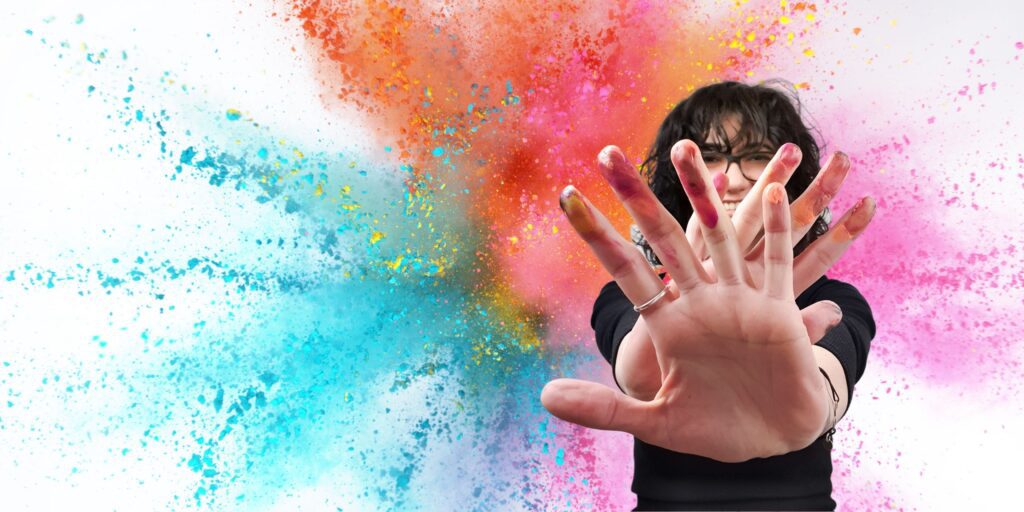
To start getting over this anxiety, remember why you’re making art. Think about how creating it makes you feel and how you want it to feel. Perhaps it is to express yourself, to sell your works for a profit, or simply as an enjoyable hobby.
Whatever it is, write down why you make art. This process can help you realize why it’s a vital part of your life and why you must overcome creative anxiety to keep doing what you do.
From here, you can try conquering your art anxiety using methods that suit you the most. Below are a few you can try.
How to overcome creative anxiety?
Start an art journal
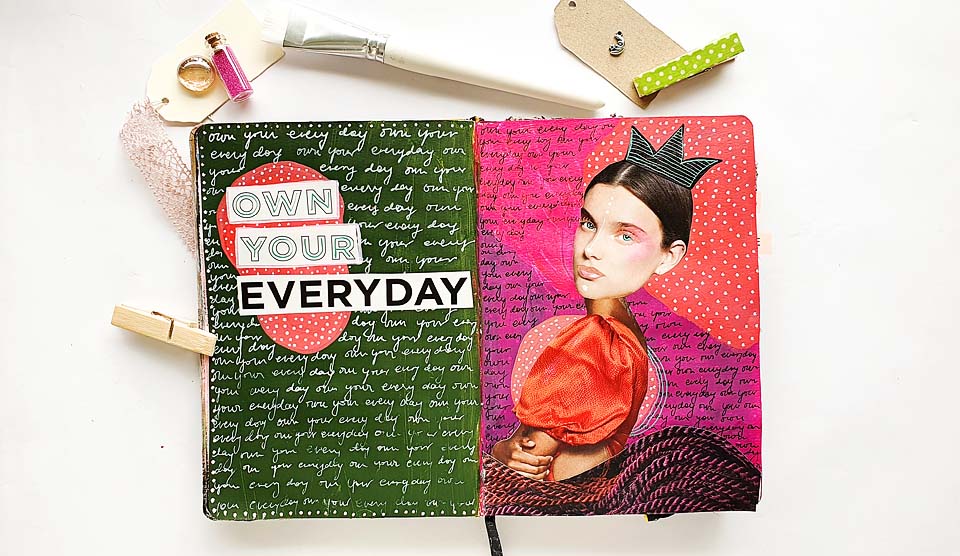
An art journal can contain illustrations, doodles, and other art forms. Starting one helps you practice your skill without the fear of committing to a canvas or a bigger medium.
It also means you can fix mistakes by painting over them, covering them with a stamp, and so on—teaching you the vital lesson that all mistakes are fixable.
Finally, it’s personal. You can experiment and learn without being scared of other people’s thoughts or judgment.
Start an art journal today with this free art journal starter kit
Learn about the supplies you need, how to start making art in a journal,
and why this is sooo good for overcoming creative anxiety.
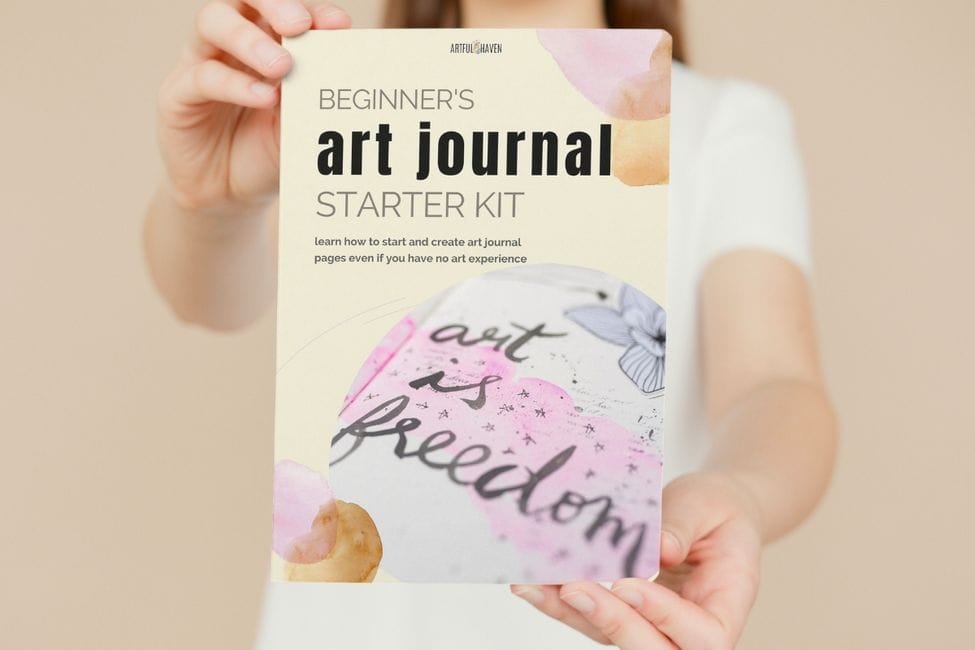
Accept that you won’t always make perfect art
Perfect art doesn’t exist: everybody’s version of perfect is different. You shouldn’t chase perfection because you’ll only bring yourself down trying to please everyone. Big expectations often lead to great disappointments.
This is why you should lower the expectations of your art and skill—especially if you’re a beginner bound to make mistakes. Instead, be proud of your small successes—like completing a painting—and celebrate them!
When you make errors, know that you can get a new canvas, flip a page, get a new piece of paper, and begin again. Doing so allows you to let go of the anxiety over making perfect artwork, a common reason why artists of every creative field fail.
Remember that mistakes are lessons
As mentioned above, mistakes are inevitable. They happen as part of the learning process, so don’t let them get you down. Instead, learn from each mistake. Make it a habit to write down what works for your art and doesn’t, such as which color combinations do and don’t go well together.
This will make for an excellent reference for your future pieces. Besides, you can always draw or paint over mistakes you make.
Regularly make art to improve
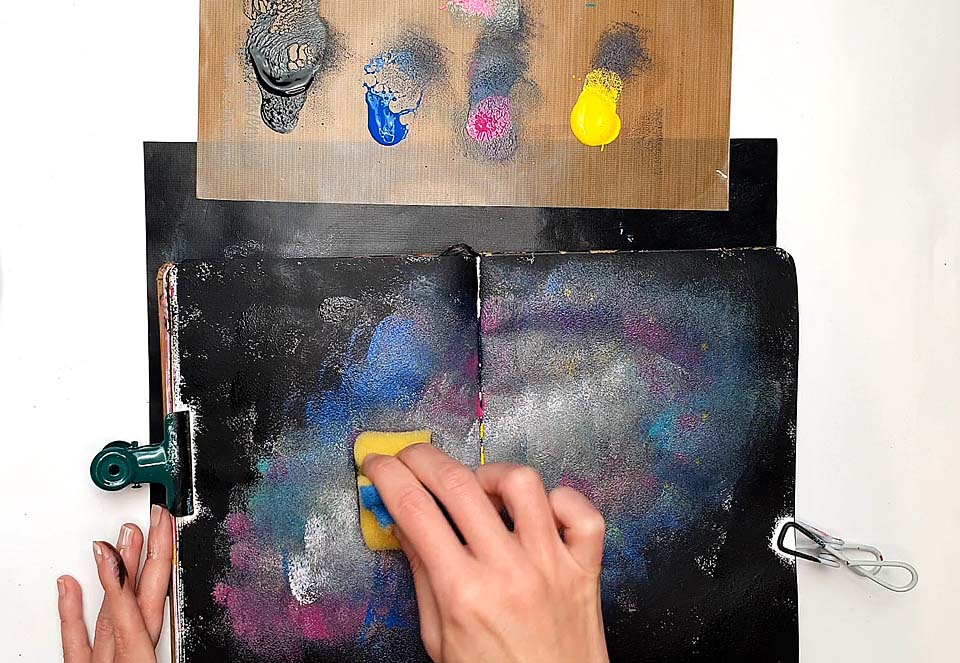
The more time you spend creating, the more your skills and output will improve. Even 10 minutes of sketching daily is good practice for overcoming creative anxiety concerning your abilities. With this, you’ll notice your mistakes and correct them as the days pass.
What’s more, Goodnet’s post ‘5 Self-Care Benefits of Art’ explained that creating art helps process emotions. Expressing your feelings with a pencil or brush lets you dive deeper into yourself and know the reasons for your anxiety to address it precisely.
Focus on the process
Picturing the result of your artwork cripples your mind because you’ll overthink every stroke and color. It keeps you from enjoying art and creates a nest for anxiety.
As an alternative, focus on the creation process. Observe how paint behaves, how ink absorbs into the paper, and how you feel when choosing colors.
Be mindful of how a brush or stylus feels in your grip or watercolor paper under your palm. Make the process a special time for your own well-being instead of worrying over the final product.
Don’t compare your art to others
The reason why everyone’s definition of perfect is different is that each person is unique. In the same way, each artist is different. That’s why you shouldn’t compare your work to others.
Take advantage of your uniqueness and claim it as your own. What matters is that you like and enjoy your art. You can use other people’s art as inspiration; just don’t let it put your self-esteem down.
Forget about having a style
Developing your own art style comes with time. Additionally, not having a distinct style doesn’t make you less of an artist. So, don’t force yourself to develop or conform to an art style.
Doing so may only stress you out more and contribute to your creative anxiety. Explore different techniques and enjoy them rather than limiting yourself right away.
Purposely make bad or silly art
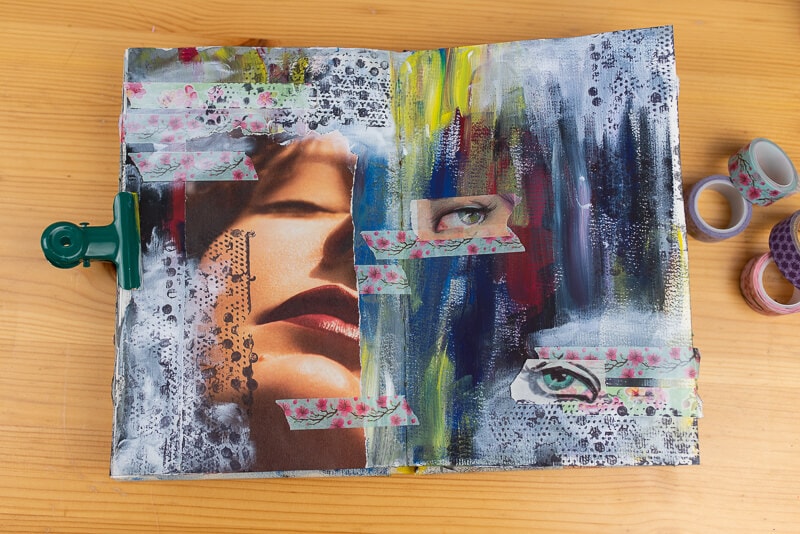
Bad or silly art is still art. Making it helps you eliminate perfect expectations, so do it more often. Splash paint randomly on a canvas, allow your hand to control your sketch, or doodle the first thing that comes to mind.
This can help you relieve the pressure of making perfect art and help bring the fun back into the actual creative process to rid you of your anxiety.
Maintain a ritual
A ritual helps you get into your creative zone. It makes you comfortable enough for your creative juices to flow and gain inspiration. Before creating, set the atmosphere by putting on your favorite music, lighting a few candles, or whatever makes you feel most comfortable.
Use this time to visualize what you want to improve in your art, whether it’s your technique, color combinations, or creativity. This way, you won’t get anxious when you’re stumped for ideas.
Experiment a lot to overcome creative anxiety
Experimenting allows you to practice having no result in mind. It rids you of your anxiety by allowing you to create because you want to and not to please anyone.
Use your supplies randomly, try mixed media art, and play with your tools like a kid. You might even discover a new technique or skill along the way.
Make your art space comfortable
A comfortable art space improves your creativity by keeping you safe from the anxiety of a messy environment. A podcast episode entitled ‘Spring Cleaning for Graphic Designers’ recommends ridding your shelves and drawers of clutter, such as dried pens and stale paint.
This is because a clear space will improve your concentration and creative flow. You can also remove distractions: wear noise-canceling headphones, have a dedicated room or corner of your home to work in, and keep gadgets away while you work.
Finally, consider decorating your space with inspirational work using a vision board. To build one, a popular article ‘How to Make a Vision Board Art Journal’ suggests including quotes, photos, and cutouts that evoke positive emotions. It’ll be great to look at whenever you need motivation or encouragement.
Creative anxiety keeps you from making your best art. Conquer it today with our tips and let your creativity flow!
Specially written for artfulhaven.com
By: Rhiannon Jaliyah
Start an art journal today with this free art journal starter kit
Learn about the supplies you need, how to start making art in a journal, and why this is sooo good for overcoming creative anxiety.

Find out more about starting an art journal as a way of overcoming creative anxiety
How to Start an Art Journal Page: 7 Easy Ideas For Beginners
Best Art Journals You’ll Love Using For Different Art Styles And Techniques
7 Cheap Art Journal Supplies That’ll Boost Your Creativity And Save Bucks
